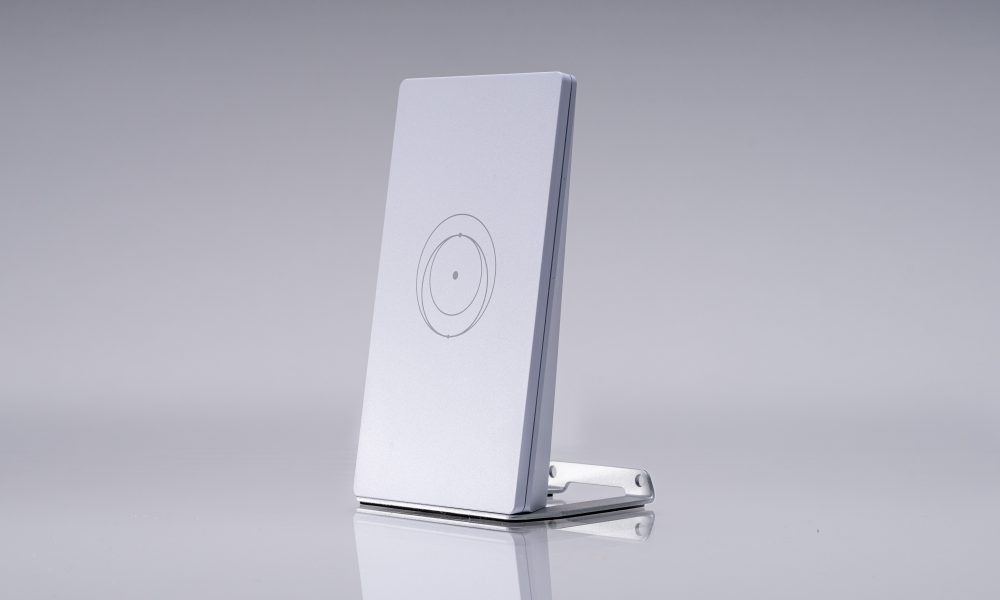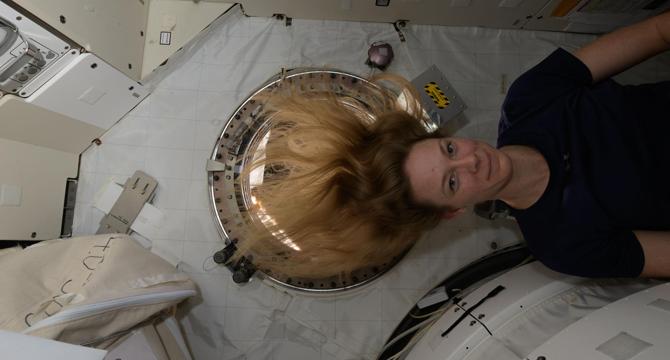Space News
Earthsky
31

Image Credit: Earthsky
Becoming Earth by Ferris Jabr: Media we love
- Becoming Earth by Ferris Jabr explores the abundant life on our planet, from microbes underground to microorganisms in the air, showing how life has shaped Earth profoundly.
- The book is divided into sections focusing on life in rock, water, and air, taking readers on a journey from Homestake Mine in South Dakota to the Amazonian rainforest and beyond.
- Jabr illustrates how life creates small ecosystems everywhere, like in Uganda, where an elephant's footprint forms a habitat for various creatures.
- The influence of life on Earth is extensive, as even the footprints of large animals like elephants serve as ecosystems and contribute to the planet's transformation.
- Marine microbes play a crucial role in regulating climate by recycling methane, one of the largest greenhouse gases, preventing its harmful impact on global warming.
- The book also addresses the issue of plastic pollution, highlighting places like Kamilo Beach in Hawaii, where significant amounts of plastic debris continue to wash ashore annually.
- In the air section, Jabr discusses how bacteria in the atmosphere seed raindrops, the importance of fire to landscapes, and the rising levels of greenhouse gases.
- Becoming Earth emphasizes the need to focus on preserving our planet rather than seeking to colonize other worlds, stressing the importance of ecological understanding and sustainable practices.
- The book conveys a powerful message about the abundance of life on Earth, the transformative impact of living organisms, and the urgency of protecting our only known living planet.
Read Full Article
1 Like
Teslarati
22

Image Credit: Teslarati
SpaceX’s Starlink Router Mini targets home Wi-Fi dead zones for $40
- SpaceX has launched the Starlink Router Mini priced at $40 to improve home Wi-Fi connectivity and eliminate dead zones.
- The Router Mini is positioned as a budget-friendly solution for extending Wi-Fi coverage in compact setups with basic needs.
- While suitable for most basic residential setups, the Router Mini may experience decreased performance in spaces with multiple barriers.
- The Router Mini complements the higher-performance Gen 3 router, targeting different user requirements based on home size and usage.
Read Full Article
1 Like
Knowridge
204

Image Credit: Knowridge
Scientists find new way to test the holographic universe theory
- Physicists are exploring the connection between quantum mechanics and general relativity to create a unified theory called 'quantum gravity.'
- Researchers at Utah State University are studying the holographic principle, suggesting the universe might be like a three-dimensional hologram described by information on a two-dimensional surface.
- Testing theories of quantum gravity is challenging due to technological limitations, so physicists use mathematical models like the holographic principle for predictions.
- The research on the holographic principle by Varela, Katyal, and their team aims to uncover how quantum mechanics and general relativity can be reconciled, advancing the understanding of the physical world.
Read Full Article
12 Likes
Spaceflightnow
111

White House taps former Air Force colonel for NASA Deputy Administrator role
- Matthew Anderson, chief growth officer for the Space Force Association, has been nominated by President Trump for the NASA Deputy Administrator position.
- Anderson, a retired U.S. Air Force colonel, brings extensive knowledge of space operations and industry experience to NASA if confirmed.
- He would join NASA's leadership team to strengthen collaboration and help advance exploration, serving the American people and delivering results.
- Anderson and Jared Isaacman are well-acquainted, with Anderson hosting panel sessions featuring Isaacman at Spacepower Conferences in 2023 and 2024.
Read Full Article
6 Likes
Discover more
Digitaltrends
168

Image Credit: Digitaltrends
NASA+ blasts off on Prime Video — for free
- NASA has launched a FAST (Free Ad-Supported Television) channel on Prime Video named NASA+ for its coverage.
- Viewers can watch live rocket launches, behind-the-scenes coverage, documentaries, and space imagery on NASA+ without a Prime subscription or ads.
- NASA+ content is available on Prime Video in the Live TV or Watch for Free sections, making NASA's coverage more accessible.
- NASA+ is also accessible on major platforms and devices, providing a glimpse into space missions and cosmic discoveries.
Read Full Article
10 Likes
Inkbotdesign
372

Image Credit: Inkbotdesign
25 Home Office Ideas That Turn Chaos Into Cash Flow
- Your home workspace is crucial for maximizing productivity and profit, with every investment returning significant gains if done right.
- Research shows that employees with control over their workspace design are up to 32% more productive, with freelancers and entrepreneurs experiencing even higher increases.
- Prioritize ergonomic essentials like adjustable chairs and standing desks for longevity and productivity gains, even in small office spaces.
- Customize workspace layouts for different work modes, including deep work zones, collaborative areas, and inspiration stations.
- Consider color psychology for peak performance and invest in quality lighting to improve cognitive function and productivity.
- Utilize vertical space, dual-purpose furniture, and hybrid systems that blend physical and digital tools for maximum impact in minimal square footage.
- Create a personal branding workspace with strategic backdrop design, lighting, and audio setup for professional video calls from home.
- Plants can enhance productivity by improving air quality and reducing stress, with specific varieties offering unique benefits based on space conditions.
- Regularly assess and update your home office setup to eliminate friction, improve efficiency, and enhance overall performance.
- Successful home offices are marked by intentionality, thoughtful design, and a focus on elements that directly impact physical and mental well-being.
Read Full Article
22 Likes
Nasa
261

Image Credit: Nasa
NASA Statement on Nomination of Matt Anderson for Deputy Administrator
- President Trump has nominated Matt Anderson as NASA's deputy administrator.
- Matt Anderson, a retired U.S. Air Force colonel and executive of the Space Force Association, brings extensive knowledge of space operations and industry expertise.
- Anderson's background includes over 24 years in the U.S. Air Force, where he held senior roles in U.S. Transportation Command and other defense entities.
- If confirmed, Anderson will join NASA's leadership team to enhance collaboration in advancing space exploration and missions for the benefit of all.
Read Full Article
15 Likes
Livescience
102

Image Credit: Livescience
NASA just sent a giant balloon around the world in 16 days. Here's why.
- NASA's super-pressure balloon completed a full lap around the Southern Hemisphere in over 16 days, proving its ability to cruise steadily at extreme altitudes for long-duration science missions.
- The balloon, launched in New Zealand and about the size of a football stadium when inflated, climbed to roughly 21 miles in altitude within two hours, showcasing its cost-effective and reliable platform for data collection.
- Although the mission ended early due to a small leak affecting altitude stability, the onboard payload acted as an anchor to safely bring the balloon down into the Pacific Ocean, meeting primary objectives of testing super-pressure balloon technology for future scientific use.
- Accompanying the balloon was the High-altitude Interferometer WIND experiment, collecting data on atmospheric winds to enhance predictions in the ionosphere, while NASA launched another scientific balloon on May 3 for further system qualification.
Read Full Article
6 Likes
Brighter Side of News
199

Image Credit: Brighter Side of News
Scientists make groundbreaking discovery about Pluto’s formation
- Scientists from the University of Arizona have proposed a new theory about how Pluto and Charon formed as a binary system through a 'kiss and capture' process.
- Previous theories suggested a collision-based origin for Charon, but the new model considers Pluto and Charon's icy composition and structural strength.
- Advanced simulations revealed that Pluto and proto-Charon briefly stuck together during a grazing impact, leading to their current binary configuration.
- The study challenges traditional models and suggests that Charon may be as ancient as Pluto, while also shedding light on Pluto's potential subsurface ocean formation.
- The collision's dynamics deposited internal heat into both bodies, influencing Pluto's geological evolution and supporting theories of a subsurface ocean.
- The implications extend to other binary systems in the trans-Neptunian region, offering a new framework for understanding their formation.
- Pluto's unique features, like the nitrogen-ice glacier on Sputnik Planitia, may have been shaped by the collision with Charon.
- This discovery could have broader implications for solar system formation models, as binary systems provide insights into planetary migration and orbital mechanics.
- Future studies will explore how tidal forces influenced the early evolution of Pluto and Charon and how this scenario aligns with current geological features.
- Published in Nature Geoscience, this study reevaluates planetary formation models and deepens understanding of icy bodies in the outer solar system.
Read Full Article
12 Likes
Nasa
381

Image Credit: Nasa
Crew Expands on Health Research, Botany and Pharmaceutical Work
- NASA astronaut and Expedition 72 Flight Engineer Nichole Ayers conducted health research and worked on pharmaceutical experiments in space.
- Expedition 73 crew members focused on agricultural studies, pharmaceutical research, and studying the effects of spaceflight on the human body.
- Activities included installing equipment, collecting biological samples, analyzing microbial surfaces, and monitoring plant growth in microgravity.
- The crew also conducted experiments related to nanomaterials, cardiovascular health, and inventory management onboard the International Space Station.
Read Full Article
22 Likes
TechCrunch
173

Image Credit: TechCrunch
SpaceX’s Starlink has become a big benefactor of Trump’s tariff trade war, leaked memos show
- SpaceX's Starlink is benefitting from the Trump Administration's tariff trade war, as per leaked State Department memos.
- The memos reveal the U.S. urging countries to adopt Starlink, potentially aiding in their trade negotiations with the U.S.
- Elon Musk, founder CEO of SpaceX and close advisor to Trump, is involved in this arrangement, denying any conflict of interest.
- The State Department views promoting deals for American satellite companies as 'patriotic' amid competition from China.
Read Full Article
10 Likes
Livescience
31

Image Credit: Livescience
NASA Mars satellite uncovers markings 'like paint dripping down a wall' on Martian surface
- High-resolution satellite images have revealed dripping paint-like patterns on Mars that match those found on Earth, suggesting similar forces shaped both planets.
- These patterns indicate potential past icy, wet conditions on Mars, offering insight into the planet's climate history and its potential to support life.
- The Martian soil patterns, known as solifluction lobes, resemble those on Earth but are significantly larger, possibly due to Mars' weaker gravity.
- Research on these patterns on Mars could help identify signs of past or present environments on other planets that may support life, though more studies are needed to confirm the involvement of liquid water.
Read Full Article
1 Like
Nasa
39

Image Credit: Nasa
NASA Statement on Appointment of New JPL Director
- Dave Gallagher appointed as the new director of NASA's Jet Propulsion Laboratory in Southern California, effective from June 2.
- Current director Laurie Leshin will step down on June 1, after leading JPL with extraordinary leadership and vision.
- NASA Administrator Janet Petro praises Leshin for her contributions and expresses confidence in Gallagher's ability to lead JPL forward with his experience and deep understanding.
- NASA looks forward to JPL's continued success in pushing the boundaries of science and discovery under Dave Gallagher's leadership.
Read Full Article
2 Likes
Nasa
315

Image Credit: Nasa
Dave Gallagher Named 11th Director of JPL as Laurie Leshin Steps Down
- Dave Gallagher will become the new director of NASA's Jet Propulsion Laboratory (JPL) on June 1, succeeding Laurie Leshin.
- Laurie Leshin, who has led JPL since early 2022 and overseen various NASA missions, is stepping down for personal reasons.
- Caltech has selected David Gallagher, currently the Lab's associate director for Strategic Integration, to lead JPL.
- Gallagher, with 36 years of experience at JPL, looks forward to continuing JPL's legacy and advancing America's space agenda.
Read Full Article
18 Likes
For uninterrupted reading, download the app